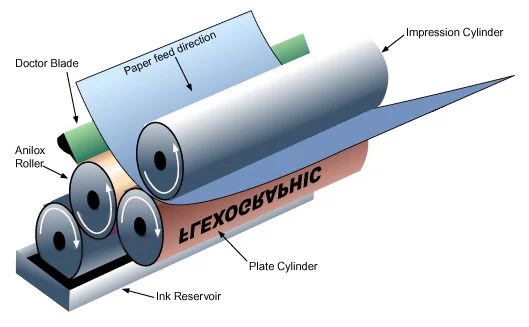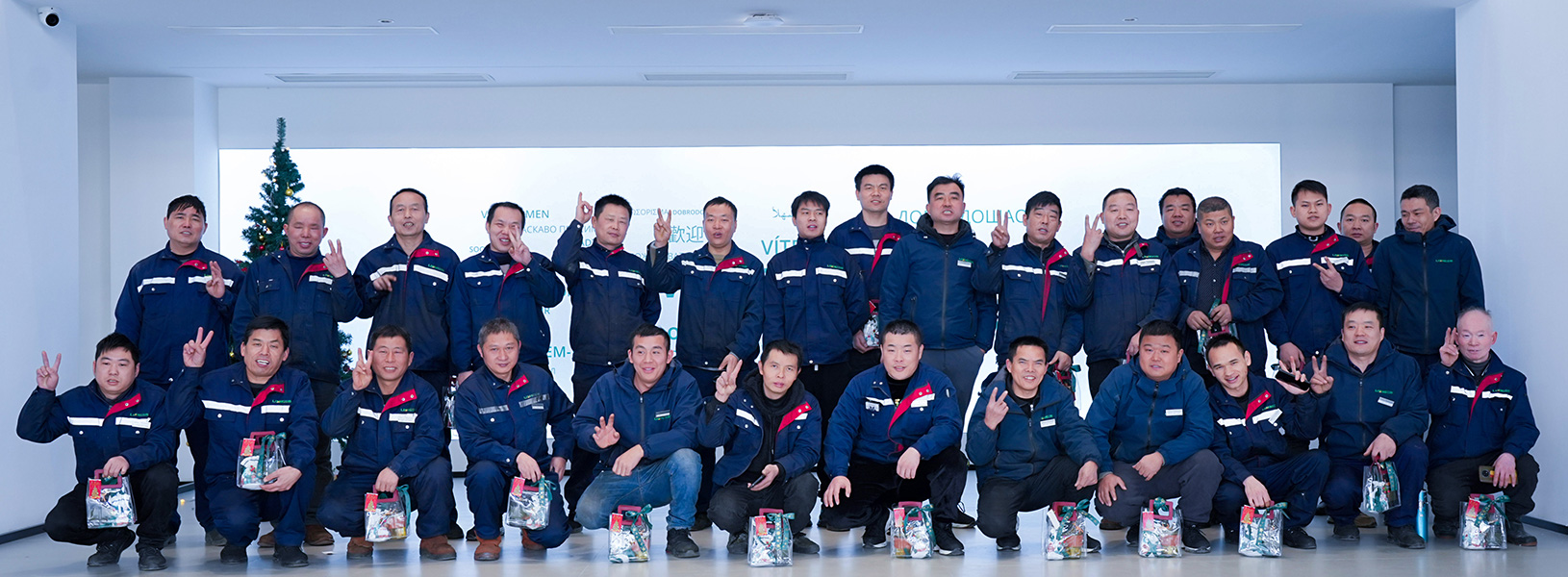
Everything You Need to Know About Flexographic Print Cylinder
In the world of flexographic printing, achieving consistent, high-quality output hinges on two critical elements: pressure and precision. At the heart of this dynamic lies the impression cylinder—an indispensable component in every flexo printing machine.
While most discussions focus on ink formulation or plate technology, it is the flexographic print cylinder—particularly the impression cylinder—that ensures ink is accurately transferred to the substrate with stability and consistency.
This blog dives deep into what impression cylinders are, how they function, and why they are essential to the flexo process. Whether you’re a machine operator, packaging engineer, or purchasing manager, this guide is everything you need to know.
What Is an Impression Cylinder?
An impression cylinder is a precision-engineered roller located opposite the flexo plate cylinder. Its primary job is to provide the exact pressure needed to push the substrate against the inked plate, allowing for clean, uniform image transfer.
In a typical flexographic print cylinder system, the substrate travels between the plate cylinder and the impression cylinder, ensuring accurate ink deposition without smudging, stretching, or misalignment.
Construction and Materials of Flexographic Print Cylinder
Common Materials
Impression cylinders are often made of:
-
Steel: Durable and suitable for high-volume printing environments.
-
Aluminum: Lightweight and corrosion-resistant, ideal for mid-speed operations.
-
Composite Materials: Used in custom applications to reduce weight and vibration.
Surface Coatings
High-performance coatings, such as chrome plating or ceramic coatings, enhance durability and reduce friction. These coatings allow for smoother substrate movement and extended cylinder lifespan.
Manufacturing Precision
Manufacturing tolerance is extremely tight—often within microns—since even a minor deviation in cylinder roundness or surface finish can lead to print inconsistencies. Advanced CNC machining and dynamic balancing ensure operational reliability at high speeds.
Working Principle of the Impression Cylinder – 3 Steps
| Step | Description |
|---|---|
| Interaction with Plate Cylinder and Substrate | The substrate is held between the plate and impression cylinders for ink transfer. |
| Pressure Zone and Transfer Mechanics | Controlled pressure ensures even ink transfer, regardless of material thickness. |
| Dynamic Balance in High-Speed Printing | Balanced rotation prevents vibration and misprints at high printing speeds. |
Interaction with Plate Cylinder and Substrate
The substrate is sandwiched between the plate cylinder and the impression cylinder. As the plate cylinder rotates with inked artwork, the impression cylinder supports the substrate and provides resistance for clean ink transfer.
Pressure Zone and Transfer Mechanics
The point of contact, known as the pressure zone, is where precise force is applied. This consistent pressure ensures even ink distribution, regardless of substrate thickness or tension.
Dynamic Balance in High-Speed Printing
At high speeds, impression cylinders must maintain dynamic balance to prevent vibrations that could cause misprints or mechanical wear. This is critical in modern flexo printing machines operating at hundreds of meters per minute.
5 Key Benefits of High-Quality Impression Cylinders
| Benefit | Description |
|---|---|
| Enhanced Image Clarity | Delivers sharp, clean prints with fine detail and smooth gradients. |
| Reduced Material Waste | Minimizes printing errors, saving substrate and ink. |
| Improved Machine Lifespan | Reduces wear on components, extending the life of the printing machine. |
| Defect Prevention | Prevents issues like smearing, skipping, and wrinkling. |
| Compatibility with Various Substrates | Works well with paper, plastic, foil, film, and more. |
Enhanced Image Clarity
Consistent pressure results in sharper, cleaner images, even for fine details and halftone gradients.
Reduced Material Waste
By minimizing printing errors, high-quality cylinders help reduce waste and improve operational efficiency.
Improved Machine Lifespan
Properly balanced and coated cylinders reduce strain on bearings and drive systems, leading to longer machine service life.
Defect Prevention
Issues such as ink smearing, skipping, or wrinkling are drastically reduced when using precision-engineered impression cylinders.
Compatibility with Various Substrates
From paper and plastic to foil and film, modern cylinders are adaptable to a wide range of materials used in packaging.
How to Choose the Right Impression Cylinder
| Factor | Description |
|---|---|
| Material Compatibility | Select suitable materials (e.g., aluminum for films, steel for rigid stocks). |
| Speed and Balance | Ensure dynamic balance for high-speed printing to maintain quality and stability. |
| Customization Options | Consider custom cylinders for unique press setups or substrate needs. |
| Press Compatibility | Match size, fit, and mounting with your specific flexo printing machine. |
Material Compatibility
Choose the right material and coating based on your substrate (e.g., aluminum for lightweight films or steel for rigid materials).
Speed and Balance Considerations
High-speed operations demand dynamically balanced cylinders to avoid performance degradation.
Customization Options
Some suppliers offer custom-built flexo plate cylinders or impression cylinders tailored to specific press designs or substrate challenges.
Matching with Press Type/Model
Make sure your impression cylinder dimensions and mounting configurations match your flexo printing machine for seamless integration.
Impression Cylinder vs. Central Impression Cylinder
| Aspect | Standard Impression Cylinder | Central Impression Cylinder (CI) |
|---|---|---|
| Design | One cylinder per color unit | One large central drum for all colors |
| Layout | Inline or stack-type setup | All color stations around the central drum |
| Applications | Best for wide-web and slower-speed printing | Ideal for high-speed, multi-color packaging |
| Cost | Lower cost | Higher cost but better performance |
| Print Quality | Good, may vary with web handling | Excellent consistency, especially for flexible and thin materials |
Design
-
Standard Impression Cylinder: One per color unit.
-
Central Impression Cylinder (CI): A large, central drum supporting multiple color stations.
Layout
-
Standard: Inline or stack-type configuration.
-
CI: All stations arranged around a single central drum.
Application Scenarios
-
Standard: Suited for wide-web and slower-speed jobs.
-
CI: Ideal for high-speed, multi-color packaging.
Cost
CI systems are typically more expensive but offer faster setup and better color registration.
Print Quality
CI cylinders offer superior print consistency, especially for flexible and thin substrates, due to minimized web handling.
How to Maintain the Flexographic Print Cylinder
Routine Cleaning Schedules
Clean the cylinder with non-abrasive, approved solutions after each run to remove ink, dust, and debris.
Proper Lubrication
Bearings and mounts should be regularly lubricated to prevent wear and ensure smooth rotation.
Inspection Tips and Replacement Intervals
-
Check for surface damage like dents or scoring.
-
Inspect coatings for wear.
-
Replace cylinders if balancing or pressure consistency is compromised.
Conclusion
Flexographic print cylinders, especially impression cylinders, are essential to achieving precision, speed, and quality in modern flexo printing machines. By understanding their function, construction, and maintenance needs, businesses can make informed decisions that improve print quality and operational efficiency.
Whether you’re upgrading your press, troubleshooting print defects, or scaling up production, never underestimate the role of a well-designed and well-maintained impression cylinder.





